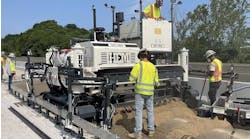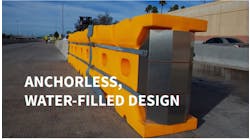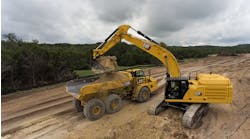Innovations are most likely to emerge when people see change as an opportunity rather than a threat.
No one likes air pollution, and much has been done recently to combat or at least mitigate air pollution. An expanding trend that has appeared in more than 70 cities and eight countries within the European Union may soon touch down on our shores as well, taking air-pollution-control efforts an interesting step further. Dubbed “low-emission zones” (LEZs) and introduced in Europe in 2007, this innovation is fast becoming common on the continent. “Low Emission Zones (LEZs) are areas or roads where the most polluting vehicles are restricted from entering. This means that vehicles are banned, or in some cases charged, if they enter the LEZ when their emissions are over a set level,” according to the website of the LEZ in Europe Network (www?.lowe?mission?zones?.eu; the LEEZEN website is sponsored in part by the European Union). “They are often the most effective measure that cities can take to reduce air pollution problems in their area. The emissions that are aimed to be reduced by LEZs are mainly fine particles, nitrogen dioxide and indirectly ozone.”
And what precipitated the need for LEZs? The LEEZEN website explained. “LEZs are implemented in areas where air pollution is at levels that are dangerous to health in order to improve the air quality to make it safer to breathe. Air pollution is responsible for 310,000 premature deaths in Europe each year, more than caused by road accidents. Air pollution particularly affects the very young and the old and those with heart and lung diseases—both common causes of death in Europe. It also triggers health problems like asthma attacks and increases hospital admissions and days off sick. The human health damage that air pollution causes is estimated to cost the European economy between €427 billion and €790 billion per year.” For those not familiar with recent Euro-to-dollar exchange rates, that’s approximately $552 billion to over $1 trillion per year. And those kinds of numbers are attracting attention.
LEZ and the EU
LEZs are not new. The entire city of Tokyo has been an LEZ since 2003. But the application of LEZs has never been as enthusiastically or pervasively applied as it is being applied in Europe today. And given the advances in toll collection and smart-license plates, implementing LEZs has gotten easier, more effective and more efficient.
“The main issue is that we have EU pollution-limit values we must comply with. Pollution levels set by the EU are legally binding, and jurisdictions not in compliance face quite serious fines. So, there is a need to improve air quality quickly,” explained U.K.-based Sam Pollard, a principal environmental scientist at AECOM. A global provider of professional technical and management support services, AECOM is conducting an LEZ feasibility study for the city of Glasgow, Scotland.
“To date, London, Oxford and Norwich are the only places in the U.K. with an LEZ in operation. LEZs are one of the measures by which air quality can be improved at a local level. They can be designed for local circumstances in order to reduce pollutant concentrations, whilst also being cost-effective, even over relatively small areas. LEZ schemes on a similar scale to the London LEZ are unlikely to be suitable for the majority of situations, so simpler schemes, which target relatively small areas or specific vehicles fleets, are often preferable.”
How does an LEZ work? First, a given area is designated as an LEZ. As Pollard suggested, there is no set framework or formula; that is determined largely by local circumstances. For example, the London LEZ covers much of the greater city area, but aims mostly at diesel-engine trucks, buses, coaches and large vans. However, all vehicles that do not meet LEZ-emission standards must pay a daily charge or a penalty.
But in Austria only one highway near Tirol is so designated and it only affects heavy vehicles. In Germany, motorcycles are exempt, but heavy diesel vehicles and private autos with poor emissions are restricted. In Italy each province sets LEZ parameters that cover all vehicles, including motorcycles. Most LEZs operate 24 hours a day, 365 days a year, but some do not. In general, vehicles over 3.2 tons (trucks and buses) are classified as “diesel heavy-goods vehicles” and face the most serious fees or restrictions. And usually all vehicles entering LEZs, except for non-air-polluting electric or other zero-emissions vehicles, are subject to LEZ rules. In the EU, vehicle emissions are determined by the Euro Standards classification system, with each specific vehicle type given a pollutant-level rating. That rating determines which vehicles can enter an LEZ, which are prohibited from entering and which must pay a fine to enter. Once an LEZ is established, the next issue is enforcement.
“Enforcement is one of the greater challenges of LEZs,” added Pollard. “And it can affect the overall cost of a scheme. But much like congestion pricing or even vehicle registration, the key lies in ensuring that local authorities have significant enforcement powers. Legislation must be in place before an LEZ begins operation in order for the scheme to work properly. Once local authorities have enforcement powers, then it becomes very much like tolls collection. In London, they use cameras with license-plate registration. In Germany and Sweden, where vehicles must obtain LEZ stickers, police enforce the regulations manually. When a violation is detected, fines are issued. Those fines can be quite steep and work very much as a deterrent against nonpayment.”
Pollard also advised that before any type of LEZ plan can be designed and implemented, it is critical to know exactly what the goals are for the LEZ. “To effectively apply an LEZ, a jurisdiction must undertake a detailed source apportionment. What sources contribute to pollution in your area? It is not always the same. Determine what percentage each vehicle type contributes to pollution in your area, and perform a cost-benefit analysis for each type. Focus the scheme on vehicles that pollute the most. LEZs should be specifically based on local circumstances. That is why LEZs exist on both large and small scales. You can have a zone that encompasses all of London or one that only affects a few streets.”
Clan of benefits
In Glasgow, Pollard and his team are working closely with the City Council to define how best to implement an LEZ. To that end, they first sought to determine the location and size of an LEZ for Glasgow; predicted benefits to air quality; the cost benefit and cost-effectiveness of an LEZ; a basis for implementation; a preferred method of enforcement; and the vehicle types and Euro standards affected. While emphasizing the value of LEZs in reducing air pollution, Pollard cautioned that measuring their overall effectiveness can be difficult.
“If an LEZ reduces particulate matter by 80 or 100 tons, you can assign each one of those findings a financial value and then compare that to the cost of implementing the scheme. However, the effectiveness of an LEZ can be difficult to quantify and explain to the public. So the cost-benefit analysis is a very big issue. That’s especially true for the operators of heavy-goods vehicles, buses and people who drive older, more-polluting cars. They see direct costs up front, though they may not recognize as easily the health benefits or health costs saved over time through reduced pollution. In the EU, though, the cost-benefit analysis is somewhat equalized, as we face considerable fines if we do not meet pollution regulations.”


